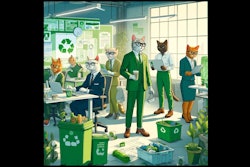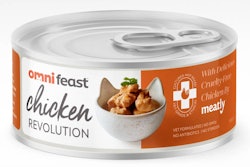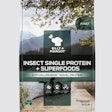
The pet food industry plays a pivotal role in the global food system with a significant impact on both the environment and society, and this is why the Pet Sustainability Coalition (PSC) has released its Blueprint to Responsibly Sourcing Animal Proteins for the Pet Food Industry with all the risks, challenges and information needed to make decisions regarding proteins in pet food products.
The free 70-page report is a comprehensive guide designed to help pet food companies advance their responsible sourcing journeys, aligning with the broader food industry's sustainability standards, said Stephie Volo, chief impact officer with Earth Animal, who along with PSC and Ocatra, helped develop the Blueprint.
“We have an obligation to use the Earth’s resources responsibly," said Volo in a July 24 webinar introducing the Blueprint. “We also have a fundamental responsibility for the welfare of the animals we use in our products as well as those we have in our lives as companions.”
The report is free because PSC believes collaboration is important, and everyone should have access to the tools and resources to be as positively impactful as possible, said Volo.
"My hope for the Blueprint is to give companies a guide so they don’t have to reinvent the wheel and expend resources figuring out how to get started," she said. "This is a framework for them to get started on their responsible, sustainable sourcing journey.”

The PSC Blueprint is designed to help pet companies address these challenges head-on, regardless of how mature or sustainable their existing sourcing strategy is. It serves as a comprehensive guide in alignment with the United Nations Sustainable Development Goals (SDGs), Global Reporting Initiative (GRI), Science-Based Targets (SBTi), and the European Sustainability Reporting Standards (ESRS).The Blueprint is structured into five main parts:
- Context & Methodology: This section highlights the pet food industry’s potential to drive sustainability within its supply chain. It emphasizes the need for the industry to tackle environmental, social and animal welfare issues.
- Potential Material Impacts and Risks: Here, companies can identify the most significant impacts and risks within their supply chains. This identification process is crucial for prioritizing actions that will have the most substantial positive effect.
- Assessing Impacts and Risks: This part provides a framework for evaluating the significance of identified risks. Such assessments ensure that sustainability efforts are focused and effective.
- Summary of Potential Material Impacts of Eight Relevant Species: Offering environmental impacts, animal welfare impacts and considerations for responsible sourcing for farmed beef cattle, deer, broiler chickens, egg-laying hens, lamb, pigs, salmon and turkey.
- Taking Corporate Action: Guidance is given on formalizing responsible sourcing strategies. Companies are encouraged to set clear objectives and targets, engage with stakeholders, and measure their progress. Transparency and accountability are emphasized as key components of successful sustainability initiatives.
Darren Vanstone, managing director with Ocatra, said users should not be intimidated by the 70-page document. “This is really a process of continuous improvement and development," he said. "Start where you’re at, and know you don’t have to do it on your own. There are resources available.”
He noted the report is designed to meet companies where they are. Some are near the end of their journey; others are at the beginning.
"The important thing to remember is companies often feel like they’re doing it on their own, but you’re part of a chain with a lot of people doing the same thing you’re doing, so reach out," he added.
Volvo agreed, adding collaboration is key in this process. “What I’ve learned along the way, which is critical, is to connect, engage, collaborate,” she said. "We would not be where we are today or have learned as much as we’ve learned without collaboration.”
Volo recommended connecting with stakeholders, partners, PSC, peers and colleagues -- both inside and outside of the pet industry. " There is no reason to reinvent the wheel if you use the Blueprint."
Click here to download the PSC Blueprint.


















